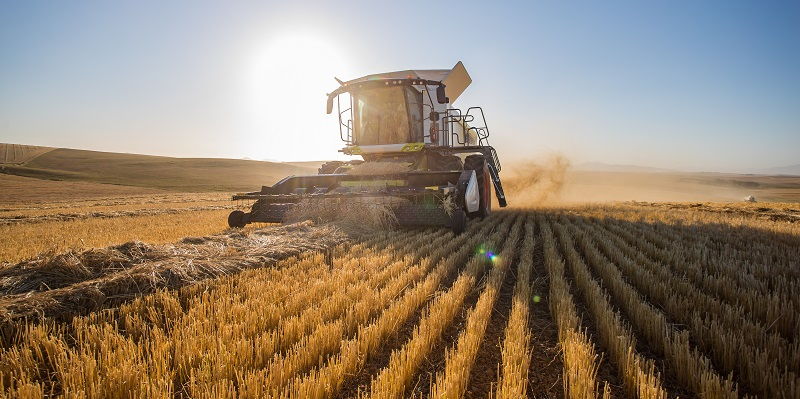As technology continues to advance, various industries are exploring the potential of data science to improve their operations, and agriculture is no exception. Data science has emerged as a valuable tool for agronomists, allowing them to collect, analyze, and utilize vast amounts of data from multiple sources to make informed decisions and optimize their farming practices. By harnessing the power of data, agronomy professionals can unlock the hidden potential of their crops and revolutionize the way agriculture is conducted.
The importance of data science in agronomy
In today’s fast-paced world, agronomists face numerous challenges, from unpredictable weather patterns to increasing market demands. Data science offers a means to effectively tackle these obstacles by enabling agronomists to gain valuable insights from the vast amounts of data available to them. By leveraging advanced analytical techniques, agronomists can discover new patterns and relationships that were once hidden or unknown, facilitating more informed decisions and ultimately increasing efficiency and profitability in agriculture.
The application of data science in plant species identification
One of the remarkable applications of data science in agriculture is precise plant species identification. Agronomists often encounter the need to distinguish between different plant species accurately. To address this challenge, data science provides a solution by utilizing binary leaf photos and extracted characteristics. By training various machine learning models with a diverse dataset, agronomists can achieve remarkable accuracy in identifying 99 plant species. This breakthrough has significant implications for crop management and biodiversity conservation efforts.
Evaluation of classification algorithms for image classification
Efficiency in image classification is crucial for accurate plant species identification. To optimize the classification process, numerous classification algorithms are evaluated, ranging from traditional methods such as Support Vector Machines and Decision Trees to modern deep learning approaches like Convolutional Neural Networks (CNNs). By benchmarking the performance of these algorithms against well-defined metrics, agronomists can identify the most efficient classifiers, enhancing the accuracy and reliability of plant species identification models.
Development of Crop Mask using R-CNN for Agricultural Mapping
A key aspect of modern agriculture is the precise mapping of irrigated center-pivot agriculture using multispectral satellite images. To address this need, agronomists are developing and applying instance segmentation methods, with a particular focus on the Region-based Convolutional Neural Network (R-CNN) technique. By leveraging R-CNN, agronomists aim to accurately identify and map center-pivot agriculture across various dryland agriculture zones. This innovative approach holds immense potential for optimizing irrigation practices and maximizing crop yields.
Mapping center-pivot agriculture across different zones
The primary objective of mapping center-pivot agriculture across different dryland agriculture zones is to accurately determine crop distribution and target areas for agricultural intervention. By utilizing remote sensing data and applying advanced image analysis techniques, agronomists can identify the different agricultural zones and quantify the extent of center-pivot agriculture. This information is invaluable for formulating region-specific strategies, resource allocation, and sustainable agricultural planning.
Analysis of Soil Conditions for Crop Disease and Weed Detection
A significant challenge faced by agronomists is the early detection of crop illnesses and weed infestations. By leveraging data science, agronomists can analyze data pertaining to soil conditions such as moisture content, temperature, and chemical composition to identify signs of crop illnesses and weed infestations. By monitoring these factors and detecting anomalies, agronomists can take timely actions to prevent or mitigate the spread of diseases, ensuring healthier crops and higher yields.
The role of data science in crop monitoring is significant
Crop monitoring plays a crucial role in ensuring optimal crop growth throughout its life cycle. By collecting and analyzing data on various parameters, such as plant height, leaf area index, and chlorophyll content, agronomists can monitor crop health, identify any deviations from optimal conditions, and implement corrective measures. Data science techniques enable agronomists to precisely track and analyze this data, providing valuable insights into crop performance and facilitating evidence-based decision making.
Early detection of plant diseases through machine learning
Machine learning, a subfield of data science, is particularly useful in the early detection of plant diseases. By analyzing subtle signs and symptoms of diseases captured in images, machine learning algorithms can accurately identify and detect plant illnesses at their early stages. With the integration of computer vision and machine learning techniques, agronomists can rapidly and non-invasively diagnose plant diseases, enabling timely intervention and preventing severe crop losses.
Data science is transforming the agricultural landscape, empowering agronomists to make data-driven decisions, optimize crop yields, and effectively combat diseases and infestations. As technology continues to advance, the potential for data science in agriculture is limitless. Future directions include the integration of Internet of Things (IoT) devices to gather real-time data, the development of robust predictive models for climate and market conditions, and the adoption of precision agriculture practices to achieve sustainable and efficient farming systems.
In conclusion, the incorporation of data science in agriculture represents a paradigm shift in agronomy practices. With the ability to collect, analyze, and utilize data effectively, agronomists can improve crop efficiency, optimize resource allocation, and address the challenges faced in modern agriculture. As we continue to unlock the potential of data science, the future of agriculture holds promise for increased productivity, sustainability, and food security.

